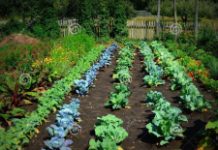“Go to the source.”
That’s good advice in lots of situations. Today we’ll learn about a water project that represents an innovative rural-urban connection that is helping improve the environment by working from the source.
Howard Miller is outreach coordinator for the Cheney Lake Watershed in south central Kansas. He grew up on a dairy farm in this region before joining the watershed staff.
The Cheney Lake Watershed covers 633,000 acres within five counties that include the north fork of the Ninnescah River. The Ninnescah flows southeast into Cheney Lake, which supplies more than 60% of the drinking water for the 350,000-plus residents of Wichita. More than 99% of the watershed is used for agricultural purposes.
In 1993, farmers on the Reno County Conservation District board were observing two problems at Cheney Lake. One was that the lake was having increased blue-green algae blooms in the water. This was not a health hazard, but it did cause taste and odor problems.
The second problem was siltation into the lake. As soil eroded into the lake, its capacity was reduced and water levels fell. Boat owners and fishermen complained that their boat docks were left high and dry, and they had to walk to the water.
These Reno County farmers wanted to do something to remedy the situation, but they weren’t finding allies.
“No one would listen to us,” said Marion Krehbiel, one of those farmers.
At a conservation district meeting, the Reno County folks spoke to one of the farmers on the Sedgwick County conservation district board. They asked, “Would you talk to the City of Wichita water department about this?” He did so and a dialogue ensued.
These farmers talked to Wichita city staff about practices the farmers could implement upstream in the watershed that would benefit water quality and quantity in Cheney Lake. Eventually they agreed to work together.
“In 1994, our project was formed in partnership with the City of Wichita and the Environmental Protection Agency,” Miller said. “The City of Wichita has been a constant and great partner to work with since the city pays farmers for practices they implement on their farms that improve the quality of the water in Cheney Lake.”
The idea was simple: Go to the source. Rather than spending money to build a bigger water treatment plant in Wichita, for example, they could figure out ways to improve the environment at the water source and invest funds there.
Meanwhile, the Kansas Department of Health and Environment began implementing a similar program called WRAPS – Watershed Restoration and Protection Strategies. “We still have EPA dollars to help pay farmers through the Kansas WRAPS program administered by KDHE,” Miller said.
Around the same time, K-State Research and Extension developed a statewide team of watershed specialists providing education and technical assistance for conserving water resources elsewhere in the state.
Cheney Lake Watershed, Inc. has a Citizens Management Committee of local producers who set goals to reduce nutrients and sediment that reach the lake from agricultural sources. Sig Collins is committee chair. Those producers come from rural communities in the region with populations such as Pretty Prairie, 660; Arlington, 435; Castleton, 227; Sylvia, 215; Partridge, 209; and Plevna, population 85 people. Now, that’s rural.
“The City of Wichita provides funding to help farmers reach our watershed goals,” Miller said.
These goals include educational efforts and funding in the most vulnerable acres of the watershed, encouraging practices that will have the greatest reduction in sediment and nutrient runoff. These include such practices as reduced tillage, cover crops, grass plantings, relocation of livestock feeding areas, and a strong emphasis on soil health in both cropland and rangeland.
For more information, see www.cheneylakewatershed.org.
Go to the source. That idea has worked well for the City of Wichita and the farmers with whom they are partnering upstream.
We commend Howard Miller, Sig Collins, and all those involved with Cheney Lake Watershed, Inc. for making a difference by implementing soil and water conservation strategies to benefit the lake and urban water consumers. We can go to this source for best practices.




